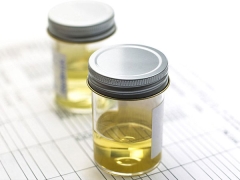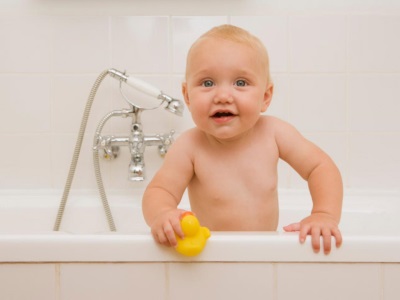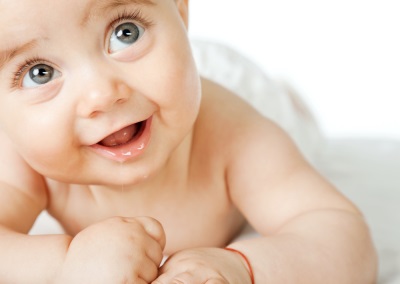General urine analysis in children: transcript in the table
Urine tests They are one of the most common methods for diagnosing childhood health problems. Most often, the child is prescribed a general analysis, which allows to draw conclusions about the presence of diseases. What are its features and how to decipher its results?
Indications
General clinical examination of urine is prescribed for preventive examinations of healthy children, and for suspected diseases of the urinary system. This analysis allows to identify urethritis, cystitis, nephritis, urolithiasis, diabetes and other pathologies.
How to collect urine?
To prepare for the collection of urine, you need to thoroughly wash the genitals of the child outside and prepare a clean jar. For general clinical research, urine is collected in the morning - completely the entire portion allocated by the child. Collect it should be on an empty stomach, so the child must first urinate in a sterile container, and after that you can have breakfast.
In infants, urine collection is recommended using a special urinal. If you collect the urine of a baby on an oilcloth or in a pot, incorrect results are possible.
Is it possible to collect urine from the evening?
The analysis will be most reliable if a urine sample taken from a child enters the laboratory within 1-1.5 hours after urination. This means that the collected urine in the evening to be taken for analysis is unacceptable, since all indicators of this analysis will be distorted.
Typical mistakes
When giving a general urine test, you cannot:
- Send urine to the laboratory, collected not from the first, but from the second or any of the following urinations. Only the first urine should be examined.
- Collect less than 50 milliliters, otherwise the material is not enough for research.
- It is too late to bring urine to the laboratory (later 2 hours after urination).
- Use a contaminated collection container.
- Forget to wash the external genitals of the child.
- Use on the eve of products that can stain the urine.
- Stay in excessively cold or hot conditions before collecting urine.
- Allow the child to have emotional or physical overloads the day before.
Analysis Decoding Table
All indicators, which are determined by urinalysis, include an assessment of the physical properties of the fluid, the detection of biochemical substances, and the study of urinary sediment.
Indicator | Its meaning | Norm | What will tell the changes | |
Colour | A physical indicator that depends on the presence of pigments in the urine. It can also be affected by the baby’s diet, drug use and changes in urine density. | Yellow of any shade, but more often straw. | Dark yellow urine is associated with jaundice; red - with injuries, glomerulonephritis, urolithiasis; very pale (almost colorless) - with diabetes; the colors of meat slop - with glomerulonephritis, heart attack, stones, or kidney tuberculosis; black - with melanoma. | |
Smell | A physical indicator that can be affected by products with essential oils. | Specific, but not sharp. | Specific, but not sharp. | Urine smells sharply, if the child has an infection, dehydration, diabetes. |
Transparency | A parameter that indicates whether there is turbidity in the urine. If the child’s urine has been standing for a long time before it reaches the laboratory, it may become cloudy due to salt retention. | Urine is transparent. | Urine is transparent. | Turbidity of urine can be caused by a high content of urates, carbonates, phosphates, uric acid, erythrocytes, epithelial cells, leukocytes. |
Acidity | Physical parameter determined by the amount of acids and alkalis in the urine. It is affected by child nutrition and exercise. | Neutral (pH 7) or slightly acid (pH 5 to 7). | Neutral (pH 7) or slightly acid (pH 5 to 7). | Acidity decreases with serious pathologies of the kidneys, a vegetable diet, infections and tumors of the urinary system, prolonged vomiting, elevated levels of potassium. Acidity increases with diabetes mellitus, a strict diet, high consumption of meat, fever, taking certain medications, lack of fluid and decreasing the level of potassium. |
Density | Physical parameter due to dissolved substances in the urine. This is an indicator of the work of the kidneys, by which you can also determine dehydration. Normally, with excessive consumption of meat, urine density will be greater, and with an excess of fruits and vegetables in the menu - less. | In the first ten days of life, the density will be 1.008-1.018, then up to 6 months of age, the density is 1.002-1.004, in 6-12 months - 1.006-1.010, in 3-5 years of age - 1,010-1.020, in 7-year age - 1,008-1,022, older than 10 years - 1,011-1,025. | In the first ten days of life, the density will be 1.008-1.018, then up to 6 months of age, the density is 1.002-1.004, in 6-12 months - 1.006-1.010, in 3-5 years of age - 1,010-1.020, in 7-year age - 1,008-1,022, older than 10 years - 1,011-1,025. | Density decreases with malfunctioning of the kidneys, excessive fluid intake, diabetes insipidus, diuretic intake. Density increases with treatment with antibiotics and diuretic drugs, infections, diabetes, lack of fluid in the diet, as well as pathologies of the renal parenchyma. |
Protein | Organic compounds, which include amino acids. | For the urine of newborns, the normal protein content is up to 5 g / liter. Also, normal protein may appear after a long standing and exercise. | For the urine of newborns, the normal protein content is up to 5 g / liter. Also, normal protein may appear after a long standing and exercise. | Pyelonephritis, glomerulonephritis, allergic reactions, malignant tumors, epilepsy, heart failure are among the pathological causes of the appearance of protein in the urine. |
Glucose | A simple carbohydrate that can enter the urine with an increase in its concentration in the blood. | Normally, in children's urine, glucose can appear after feeding (especially carbohydrate products) and in case of any digestive disorders. | Normally, in children's urine, glucose can appear after feeding (especially carbohydrate products) and in case of any digestive disorders. | The appearance of glucose in the urine (glycosuria), as a pathological symptom, occurs in diabetes mellitus and nephritis, as well as in other endocrine diseases and diseases of the pancreas. |
Bilirubin | Bile pigment that appears in the urine when it rises in the bloodstream. | Missing. | Missing. | Detection of bilirubin in the urine is most often associated with pathologies of the gallbladder and liver, but can also be a sign of renal failure. |
Urobilinogen | Bile pigment formed in the intestine of bilirubin. | Missing. | Missing. | In the urine, urobilinogen may appear due to the hemolytic form of jaundice, lesions of the intestine and liver. |
Ketone bodies | Toxic compounds formed in the body during the exchange of carbohydrates and fats. | Normally, they may be present in the urine analysis of a child on a low carbohydrate diet. | Normally, they may be present in the urine analysis of a child on a low carbohydrate diet. | As a pathological symptom, ketonuria is characteristic of fasting, repeated vomiting, acute pancreatitis, thyrotoxicosis and diabetes mellitus. |
Indican | Substance formed during the oxidation of indole. | Missing. | The appearance of indican in the urine is characteristic of diseases of the intestine, stomach and pancreas. | |
Epithelium | Epithelial cells that enter the urine from the inner surface of the organs of the excretory system. | From 1 to 3 in sight. | A greater number of epithelial cells is characteristic of violations of the urine collection procedure, as well as inflammation of the ureters and the bladder. | |
Cylinders | Peculiar casts of the renal tubules, the state of the protein, fat droplets, epithelial cells, blood cells, protein. | In the urine of newborns hyaline cylinders are detected (from protein). | Detection in the urine of a large number of granular and hyaline cylinders is possible in case of malnutrition and water balance, as well as digestive disorders. Also, the number of cylinders may increase due to the effect on the child of physical exertion, heat or cold. Pathological causes of cylindruria are glomerulo and pyelonephritis, viral infections, amyloidosis and renal infarction and other pathologies. | |
Bacteria | Pathological microorganisms trapped in the urine. | None. | The detection of bacteria indicates a bacterial infection of the urinary tract. | |
Red blood cells | Red blood cells trapped in urine. | Up to 2-3 in sight. Normal red blood cells in the urine of the child may be more after exercise. | Hematuria is a symptom of acute glomerulonephritis, kidney infarction, urolithiasis. Also, an increase in red blood cells in the urine is characteristic of cancerous processes in the bladder or kidneys. | |
Salt crystals | The content of salts in the urine depends on the diet of the child and his physical activity. Salts can be represented by urates, phosphates, oxalates. | Identified quite often, especially during breastfeeding, as well as during the introduction of complementary foods. | An excess of urates is characteristic of dehydration, renal failure, nephritis, gout, uric acid diathesis. An increase in oxalate indicates a high intake of foods with vitamin C, and may also be a sign of diabetes and pyelonephritis. An increase in phosphate levels indicates an alkaline urine reaction. There is a lot of calcium in this urine. | |
White blood cells | White blood cells, which in a small number are always present in the urine. | Up to 3 in sight. If the analysis was collected with violations, the number of leukocytes can be up to 25-50 in sight. | The increase in this indicator is characteristic of inflammatory processes in the urinary system - pyelonephritis, inflammation of the ureters, urethra, bladder, and genitals. | |
Slime | Product secreted by mucous membrane cells. | Missing. | When mucus is detected in the urine, inflammatory processes in the urinary tract are possible. |
Express analysis at home
If the child’s urine is cloudy, then the parents can still determine at home whether it is caused by a large amount of salt or leukocytes. To do this, collected in a jar of urine should be placed in a water bath. If the urine is still turbid, then there is a high probability of an inflammatory process, and the turbidity is due to the content of leukocytes. If turbidity has increased, it is characteristic of a large number of phosphates in the urine. If the heated urine became transparent, then the turbidity was formed by oxalate salts.











